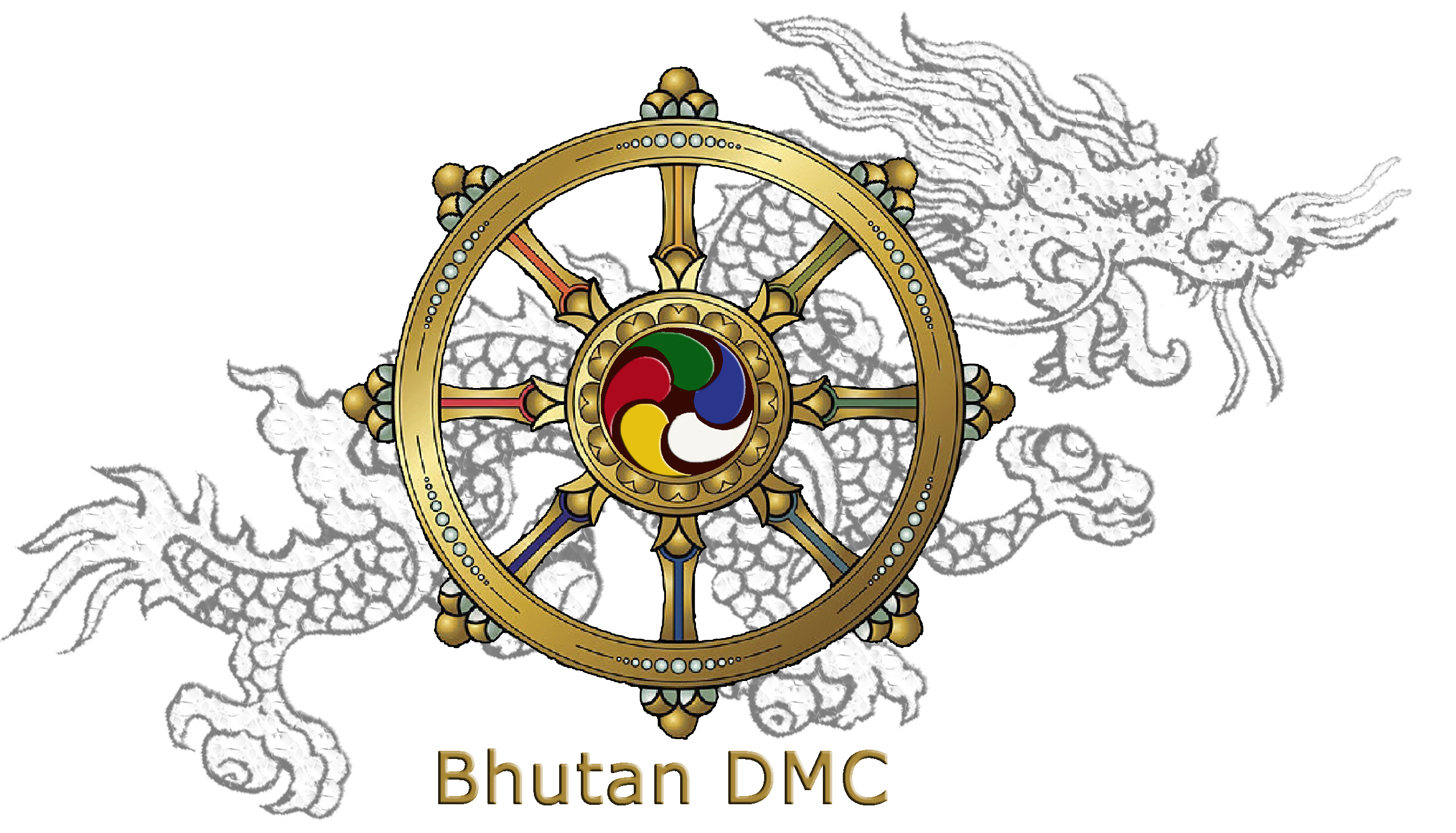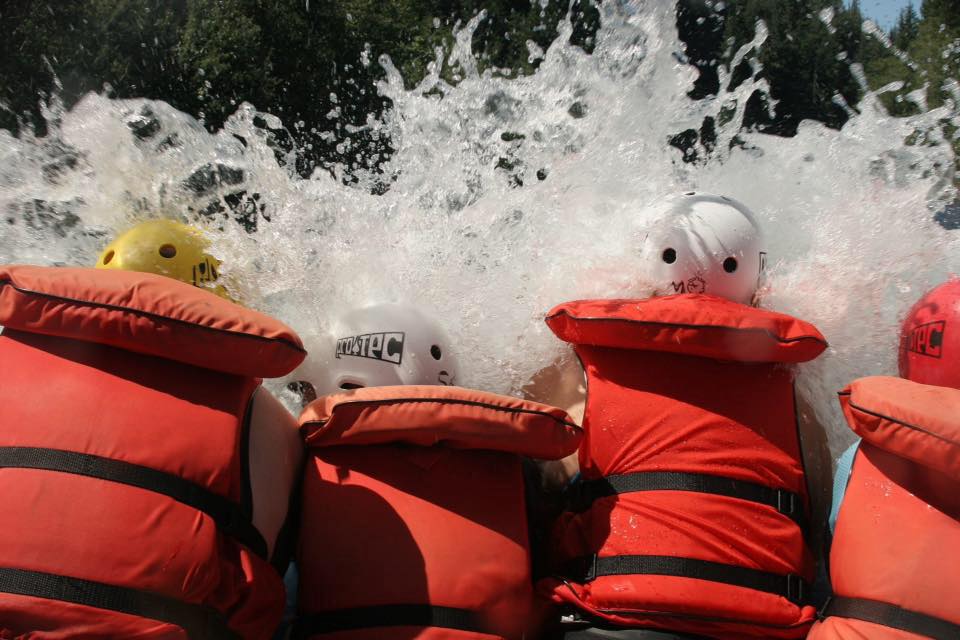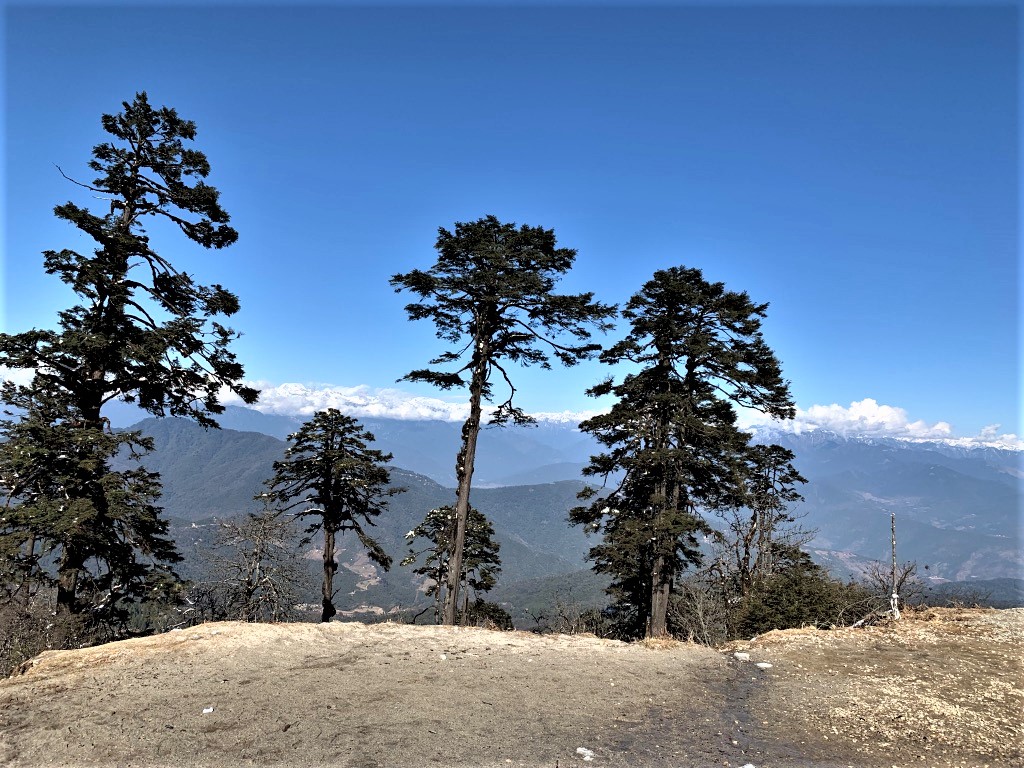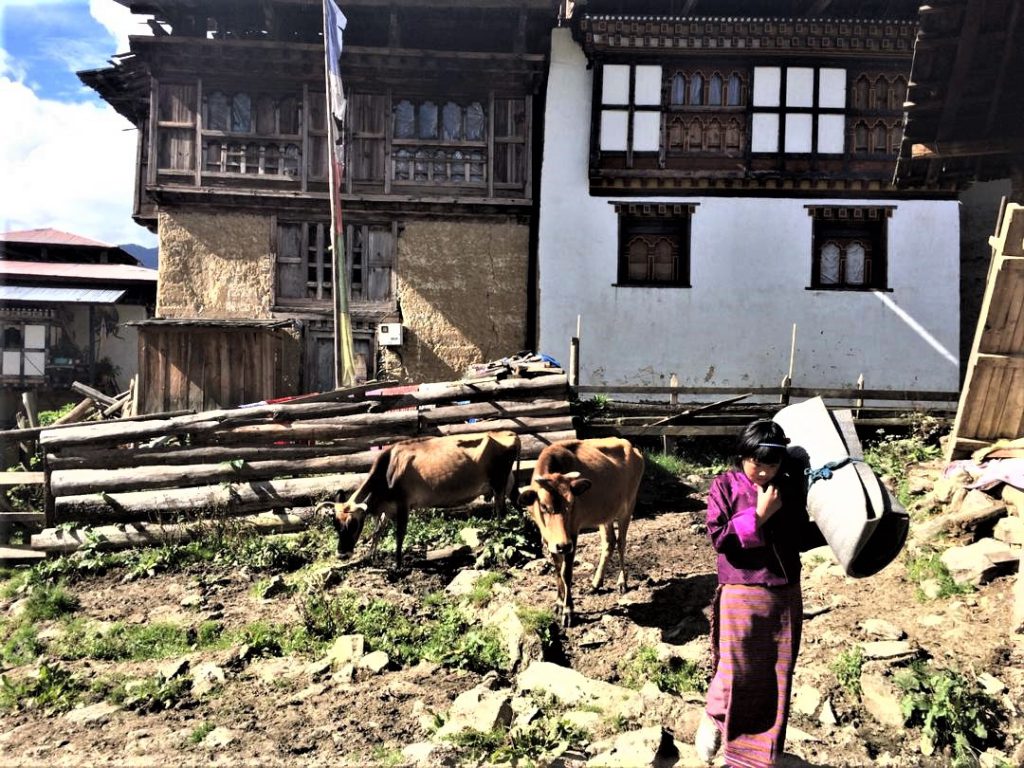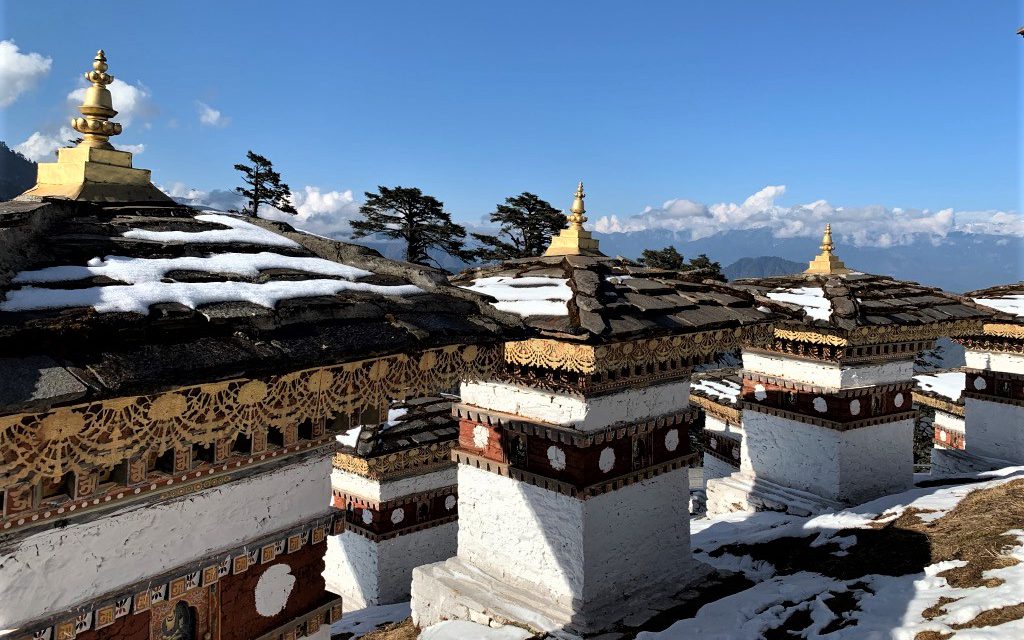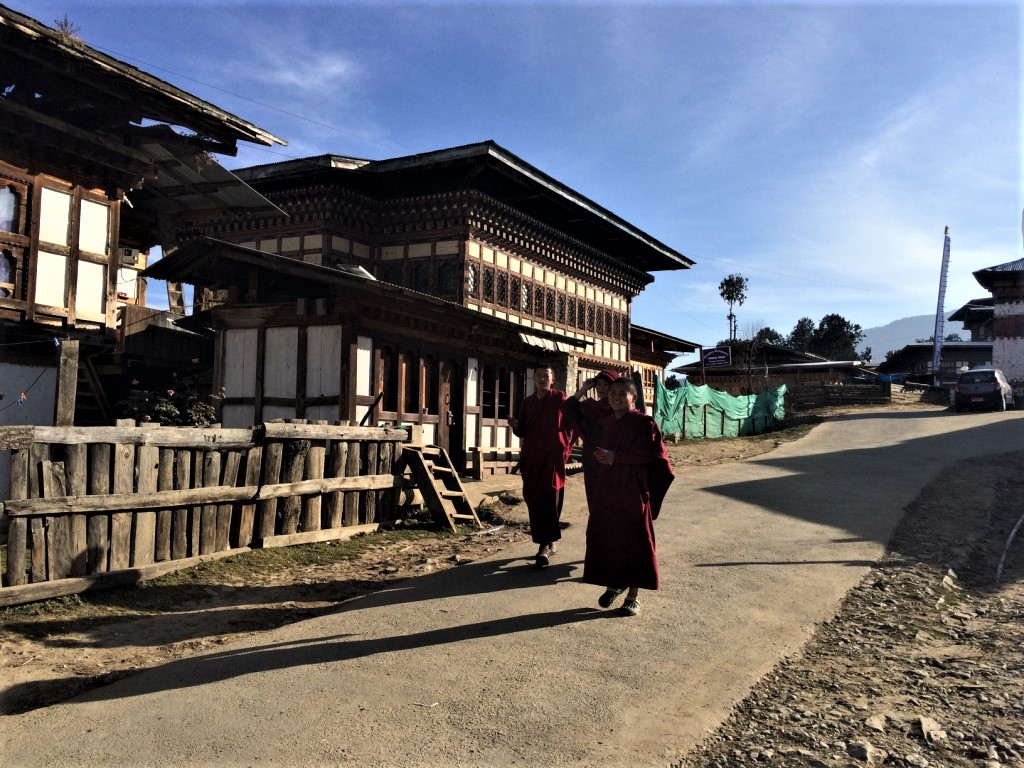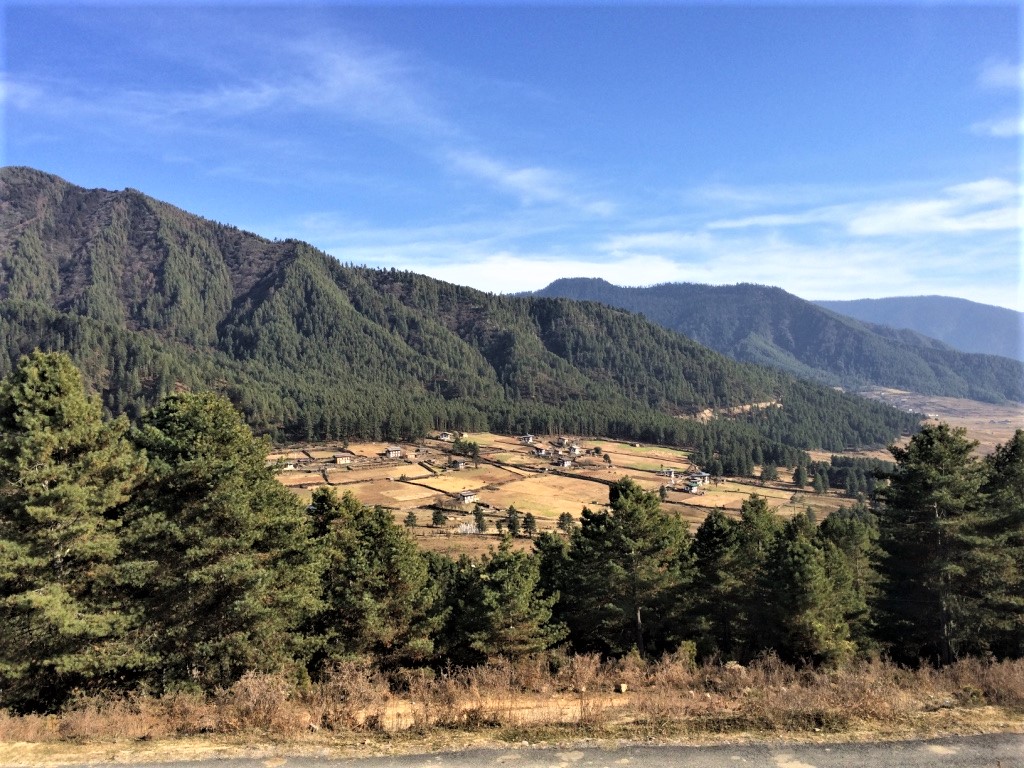This program provides opportunity to experience & explore popular destinations of Western Bhutan through various means; visits of cultural sights, mountain biking, trekking, rafting. Its an interesting mix of soft adventure and culture.
Day 1
Arrive Paro by flight
The flight to Paro is one of the most spectacular in entire Himalayas. Whether flying along the Himalayan range from Kathmandu or over the foothills from Kolkatta, the journey offers fascinating views and an exciting descent into the Kingdom. Bhutan’s first gift, as you disembark from the aircraft will be cool, clean fresh mountain air. After immigration formalities and baggage collection, you will be met by our representative, and afterwards drive to the hotel.
Afternoon explore Paro town and valley at your own pace on bicycle (Altitude: 2280 meter, Slopes: Gentle, Roads/slopes: Gentle slopes, winding roads, black topped and smooth). Also visit Kyichu Lhakhang, one of the oldest and most sacred shrines of the country.
Overnight at the hotel in Paro (Altitude 2,280m).
Day 2
Paro
After breakfast, ride on bicycle to the base of Taktshang Monastery.
Distance: 8 Km ride
Approximate Time: 20 Minutes
Riding elevation: 2280 Meters
Road: Through the villages among blue pine trees and a slight uphill after the diversion of 3 km.
Later excursion to Taktshang Monastery or Tiger’s Nest (approx. 5 hours walk): It is one of the most famous of Bhutan’s monasteries, perched on the side of a cliff 900m above the Paro valley floor. It is said that Guru Rinpoche arrived here on the back of a tigress and meditated at this monastery and hence it is called ‘Tiger’s Nest’.
Afternoon, ride to the base of Drukgyel Dzong.
Distance from the base: 10 km
Time: 30 Minutes approx.
Riding elevation: 2280 Meters
Road: Among the villages and blue pine forest through winding road with gentle up hills and downhill.
Drukgyel Dzong: It was here that the Bhutanese finally defeated the invading Tibetans and drove them back. Peak of Jumolhari ‘Mountain of the Goddess’ (Alt. 7,329 m /24,029 ft.) can be seen on a clear day from here.
Overnight at the hotel in Paro (Altitude 2,280m)
Day 3
Paro - Thimphu (55km, approx. 1.1/2-hour drive)
After breakfast, visit Ta Dzong, the National Museum. The extensive collection includes antique thangkha paintings, textiles, weapons & armour, household objects and a rich assortment of natural and historic artifacts.
Ta Dzong visit immediately followed by short walk down the trail to visit Rinpung Dzong, meaning (“fortress of the heap of jewels”), which has a long and fascinating history.
After lunch, drive to Thimphu, the modern capital town of Bhutan and visiting en route Tamchog lhakhang: built in the 13th century by Thangthong Gyalpo, also known as the Iron bridge builder. Situated on a hilltop, we need to cross an ancient style bridge to reach the temple.
Further ahead take a short stop at Chuzom, the confluence of Paro and Thimphu rivers. Three different style of stupas adorn the confluence.
Drive further and five miles before Thimphu, visit Simtokha Dzong, the oldest fortress of the country which now houses the School for Buddhist studies.
The capital town of Bhutan and the centre of government, religion and commerce, Thimphu is a unique city with unusual mixture of modern development alongside ancient traditions.
Evening explore Thimphu valley and town.
Overnight at the hotel in Thimphu (Altitude 2,320m)
Day 4
Thimphu
Altitude: 2,320 meters
Slopes: Gentle and uphill
Roads/slopes: Gentle slopes, uphill and downhill, winding roads, black topped and smooth, good number of vehicles on the road.
After breakfast, ride to the Kuenselphodrang.
Distance: 6 km from town
Time: Uphill 30 minutes approx.
Elevation: 2320 m to 2500 m at Kuenselphodrang
Road: Smooth and good, uphill
Kuenselphodrang: You can pay your obeisance and offer prayers to the Buddha, the largest statue in the country and then walk around and take a glimpse of the valley.
Then ride to National Memorial Chorten
Distance (Kuensel Phodrang to Memorial Chorten): 4.8 km
Time: approx 15 minutes
Road: Smooth and good, downhill.
National Memorial Chorten: This Chorten was built in 1974, in honour of the Third King Jigme Dorji Wangchuck, also known as “The Father of Modern Bhutan”. It is also a center of worship for the people living in Thimphu and contains many religious paintings and tantric statues.
Back to hotel. After lunch, cycle to Sangaygang viewpoint.
Distance from town: 7 km
Time: approx. 30 minutes
Elevation: 2685 metes
Road: Smooth and good, uphill.
On the way, visit:
The Takin Preserve Centre: The takin, is the national animal of Bhutan and found only in this region.
Sangaygang viewpoint: (2685 meters) to have view of whole Thimphu valley and walk through hundreds of colorful prayer flags that dot the hill overlooking the Thimphu valley.
Ride back to Changangkha Lhakhang downhill.
Changangkha Monastery: This monastery was built in 15th Century by Lama Phajo Drugom Zhipo, overlooking the Thimphu valley. Many parents of Thimphu take their newborn babies to this monastery to be blessed by a high lama.
From there cycle towards the Drupthob Lhakhang, visit Drupthob Lhakhang.
Drupthob Lhakhang: This Lhakhang is one of the few surviving nunneries in Bhutan.
After the visiting Drupthob lhakhang, ride back downhill to hotel from Zilukha stoping on the way for a view of the Trashichhoedzong. This impressive fortress/monastery houses Secretariat building, the throne room of His Majesty, the King and various government offices. It is also the summer residence of Chief Abbot and central monk body.
Overnight at the hotel in Thimphu (Altitude 2,320m).
Day 5
Thimphu - Gangtey (150km, approx. 5 hours’ drive)
After breakfast, Thimphu city tour, with visit of:
National Library, which holds a vast collection of ancient Buddhist texts and manuscripts, some dating back several hundred years, as well as modern academic books mainly on Himalayan culture and religion.
Institute for Zorig Chusum: Commonly known as Arts & Crafts School or Painting School, the Institute offers a six-year course on the 13 traditional arts and crafts of Bhutan. On a visit, one can see students learning the various skills taught at the school.
Textile Museum: Opened in 2001, it is fascinating testimony of Bhutan ’s living traditions and provides deep insight into one of Bhutan’s most distinct art form.
Simply Bhutan: Simply Bhutan is an exclusive project under the Bhutan Youth Development Fund (YDF), built to offer a unique experience to its visitors. It is a living museum and studio encapsulating the cultural heritage of the Bhutanese people.
Later enjoy a dramatic drive over the high mountain pass of Dochu La (3, O8Om) and on to the Phobjikha Valley passing through dense forests of oak and rhododendron tress. The highway follows the scenic Dang Chhu before climbing through forests of bamboo and oak. Take a short stroll around the mountain pass enjoying impressive glistening peaks in the eastern Himalaya range. On a clear day the views of the Himalaya to the north are tremendous including Gangkar Punsum, the highest unclimbed peak (over 24,000 feet) in the world.
The valley of Gangtey is one of the most beautiful spots in Bhutan. The surprise of finding such a wide, flat valley without any trees after the hard climb through dense forests is augmented by an impression of vast space, and extremely rare experience in Bhutan where most of the valleys are tightly enclosed.
Overnight at the hotel in Gangtey (Altitude 3,000m).
Day 6
Gangtey – Gogona, Altitude: 3,100m, 14 km, approx 5-6 hours trek
Morning visit, Gangtey Goenpa: Perched on a small hill that rises from the valley floor, the Gangtey Monastery is the only Nyingmapa monastery on the western side of the Black Mountain’s and also the biggest Nyingmapa monastery in Bhutan. The Monastery is surrounded by a large village inhabited mainly by the families of the 140 Gomchens who take care of the Monastery.
Then, explore the Phobjikha Valley and villages around. Phobjikha is also the winter home of black necked cranes that migrate from the arid plains in the north to pass winter in milder and lower climate. Phobjikha, at an altitude of 2,900 m, falls under the district of Wangduephodrang and lies on the periphery of the Black Mountain National Park.
Afterwards, commence the trek.
The trek leaves the valley at 2,830km and leads south, then west through meadows and fields. It then climbs through a mixed forest of juniper, bamboo, rhododendrons and magnolia. The trail is rough and rocky and weaves through trees where pack animals have created deep muddy furrows. After crossing Tsele La (3,440m) the trail crosses several meadows, and then descends through forests to Gangak (3,020m). It is then a short climb to the camp at Gogona (3,100m), a beautiful hilltop site overlooking a long valley. Nearby is Gogona Lhakhang and dozens of poles with white prayer flags fluttering.
A 30-minute walk beyond Gogona is a hamlet where you may find homemade arra to buy. The women here weave blankets and speak a different dialect called Bjop-kha (language of the nomads).
Overnight camp (Altitude 3,100m).
Day 7
Gogona – Khotokha, Altitude: 2,790m, 15 km, approx 5 - 6 hours trek
After breakfast, start trek. The trail winds gently up above Gogona village, past flocks of sheep and ploughed fields. Climb into a forest of firs, oak, spruce, dwarf rhododendron, miniature azaleas, cypress and juniper. Much of the undergrowth is daphne, the plant that is used for hand-made paper and may be identified by its yellow flowers. Then a long but gradual climb leads to Shobju La pass (3,410m). The trail down from the past is rocky and muddy, weaving through the forest and criss- crossing a small stream. Eventually, at about 3,000m, the trail meets a rough trek used by tractors to collect wood from the forest. Follow the road, with a few short cuts through the woods, to a sawmill and woodcutters camp at Dolonaga (2,830m). Still heading down, the trail overlooks the broad Khothangkha valley and eventually reaches a clearing, Chorten Karpo, where there are four Chortens dedicated to the four Je Khenpos who came from this area. Three of the Chortens are square, in Bhutanese style, and the fourth is Nepali style. The best camp is in this clearing at 2,790m, beside a forest of a large blue pines overlooking the valley and the village of Khothangkha, comprising about 60 rustic houses.
Overnight camp (Altitude 2,790m).
Day 8
Khotokha - Tikke Zampa & transfer to Punakha, Altitude: 1,300m, 12km, approx 5 hours trek
After breakfast, begin trekking. A short, steep climb along a well-known path takes you to Tashi La (2,800m). This is the upper terminus of the cable car that transports wood down to Chhuzomsa, 1,300m below. The walk down is through a beautiful forest, with the undergrowth changing from rhododendrons and magnolia to ferns and dwarf bamboo. This stretch of trail is one of the finest bird-watching areas in Bhutan. Among the species found here are laughing thrush, shrike, magpie and woodpecker. The trail then plunges down past steep terraced wheat fields to a cluster of houses at Whachay. The trail eventually meets the road near Tikke Zampa at 1,500m.
End of trek & transfer to hotel.
Evening at leisure in Punakha & Wangduephodrang valleys.
Overnight at the hotel in Punakha / Wangduephodrang (Altidue 1,300m)
Day 9
Punakha
After breakfast, a beautiful hike (total about 2 hours round trip walk) takes you to the regal Khamsum Yuelley Namgel Chorten, which was built to remove negative forces and promote peace, stability and harmony in the changing world. The Chorten dominates the upper Punakha Valley with commanding views across the Mo Chhu river and up towards the mountainous peaks of Gasa and beyond.
Afternoon proceed to visit Punakha Dzong: Built strategically at the junction of Pho Chhu and Mo Chhu rivers in 1637 by Shabdrung Ngawang Namgyal to serve as the religious and administrative centre of the region, Punakha Dzong has played an important role in Bhutan’s history.
Then visit Sangchhen Dorji Lhuendrup Lhakhang (Nunnery). Perched on a ridge amid pine trees and overlooking valleys of Punakha and Wangduephodrang, gleams the magnificent structures of Sangchhen Dorji Lhuendrup Lhakhang (Temple). The temple houses a 14-foot main bronze statue of Avalokiteshvara (Chenrigzig chagtong chentong). Other statues include those of Guru Padmasambawa, Gautama Buddha, Zhabdrung Ngawang Namgyel, Tsela Namsum, the 21 Taras and Tsepamay (Buddha of longevity).
Overnight at the hotel in Punakha / Wangduephodrang (Altidue 1,300m)
Day 10
Punakha - Paro (125km, approx. 4 hours’ drive)
After breakfast, embark on an interesting excursion to Chimi Lhakhang : situated on a hillock in the centre of the valley, this temple is dedicated to Lama Drukpa Kuenley, who in the late 15th century used humour, songs and outrageous behaviour to dramatise his teachings and due to this also known as ‘Divine Madman’. This temple is also known as the temple of fertility. It is widely believed that couples who do not have children and wanting one, if they pray at this temple, they are usually blessed with a child very soon.
Afterwards proceed on a rafting expedition to Pho Chu river. Pho Chu, with its approx. 16 km course with about 15 rapids of class 2- 4 is the most popular for rafting in Bhutan. During this meticulously organized river rafting trip, you journey through the most scenic and secluded miles featuring incredibly blue water, breath-taking alpine scenery, sighting world’s rarest birds and amazing rapids on the backdrop of striking 17th century Punakha Dzong (Monastery cum fort).
After lunch, drive back to Paro via Dochula pass. Evening at leisure.
Overnight at the hotel in Paro (Altitude 2,280m).
Day 11
Depart Paro
After breakfast, transfer to the airport for flight to onward destination.
